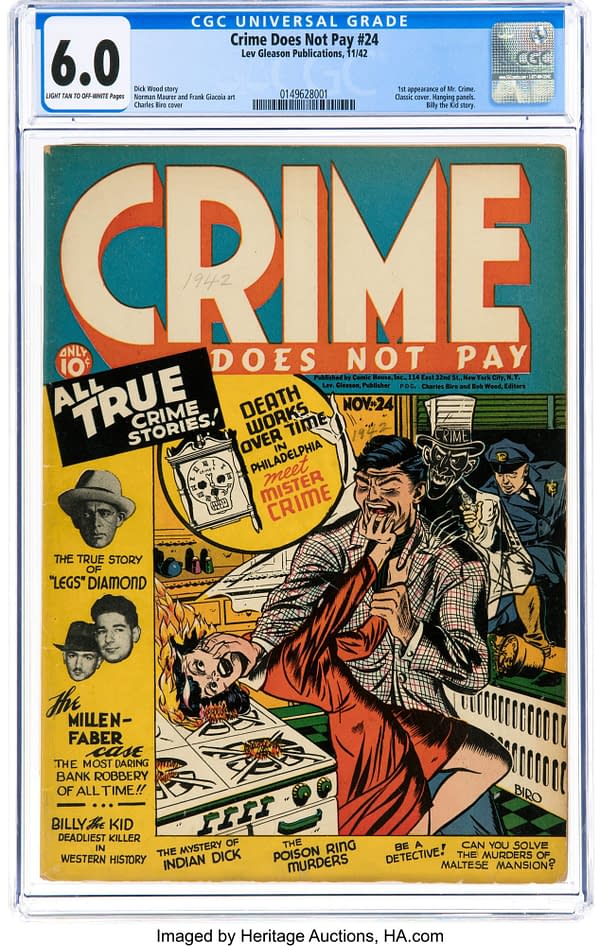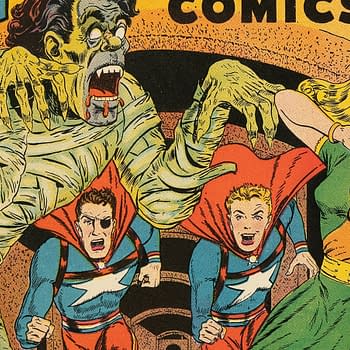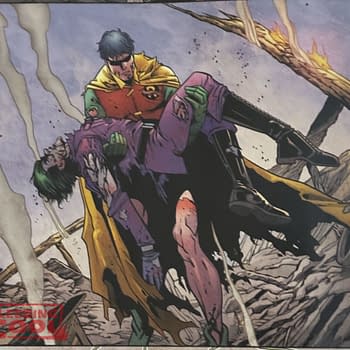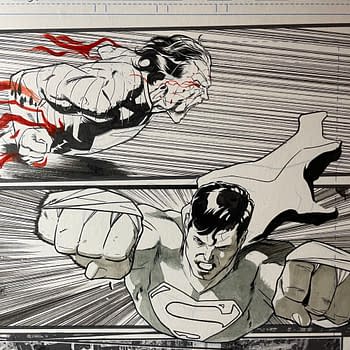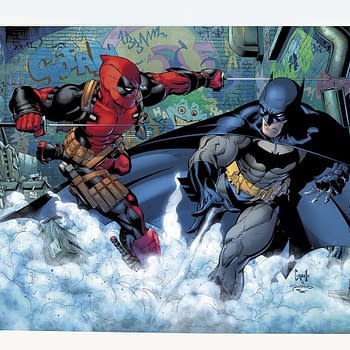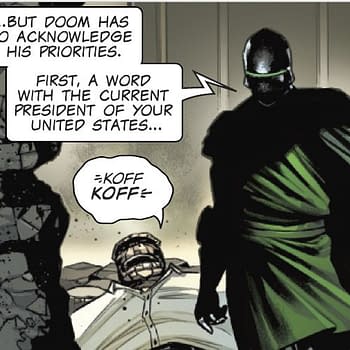Posted in: Comics, Vintage Paper | Tagged: Bob Wood, Charles Biro, lev gleason
Mister Crime and the Horror of Crime Does Not Pay #24, Up for Auction
Crime Does Not Pay is perhaps the most notorious title in American comic book history, and issue #24 is one of its most notorious issues.
Article Summary
- Explore the origins of Crime Does Not Pay, driven by Charles Biro and Bob Wood in 1942.
- Learn how Mister Crime became an iconic narrator, influencing later horror comics.
- Discover Lev Gleason's risky yet pivotal transition from The Saint to crime comics.
- Uncover Crime Does Not Pay's links to Hollywood's Hays Code and its impact on the Comics Code.
According to one comics industry legend as related in Blab! #6 (among other places) it was Charles Biro who was the originator and driving force behind the Crime Does Not Pay concept, laying out the idea for his Lev Gleason co-editor Bob Wood in a Broadway bar. If that's true, the title was a long time in the making. Wood and Biro had known each other since 1937 when both worked for the Harry Chesler studio, and Wood first prominently used the phrase "Crime Does Not Pay" in print in the debut of the character the Target in 1940's Target Comics #10, as the hero's warning to criminals that issue. Wood would seemingly foreshadow both his and Biro's future a few issues later in early 1941's Target Comics v2 #4, which centers around a scheme whereby the stories in a syndicated newspaper comic strip would provide directions for specific crimes to a criminal gang. Biro's name was used in the story for a character who was in on the scheme. Of course, Biro and Wood's Crime Does Not Pay would be accused of inspiring and providing methods for crimes countless times after the title's 1942 debut.

If Wood and Biro were waiting for the chance to launch their dreamed-of crime comic book, that chance came by way of Leslie Charteris and his creation the Saint. By his own account in an editorial, publisher Lev Gleason went to great expense to bring the Saint to Gleason's flagship Silver Streak title with issue #18, written by Charteris himself. Gleason's expensive gamble didn't pay off. Three issues later (and one issue after Gleason had boasted about how much he was paying Charteris to get the Saint in comics) the title was dead with issue #21. It was replaced by Crime Does Not Pay which picked up its numbering with issue #22.
The Crime Does Not Pay title phrase was generally inspired by the MGM film short serial of that name, which had been running since 1935. The film series offered sober warnings against a life of crime as a direct result of the then recently-instituted Hays Code, which had been instituted in part after Hollywood came under fire for glamorizing gangsters. Ironically enough, the comic book series it inspired would do much to help bring about the Comics Code some 20 years later. Notoriously, Bob Wood would himself serve time in prison for manslaughter in the first degree for the 1958 murder of his girlfriend.
The comic book series quickly hit its stride with Crime Does Not Pay #24, which introduces Mister Crime, a spectral story narrator of the type who would later become common in horror comics. The ghostly figure also encourages characters to give in to their worst instincts throughout the stories. In both that behavior and his appearance, Mister Crime is pretty clearly inspired by the advertising character Mr. Coffee Nerves, who was created by Milton Caniff and Noel Sickles in 1936. Issue #24 also features one of the most notorious covers of the series by Biro, and that is saying something. One of the most sought-after crime comics in American comic book history, there's a CGC FN 6.0 copy of Crime Does Not Pay #24 (Lev Gleason, 1942) up for auction in the 2024 October 24 – 25 Pre-Code Horror & Crime Comics Showcase Auction #40272 at Heritage Auctions.
